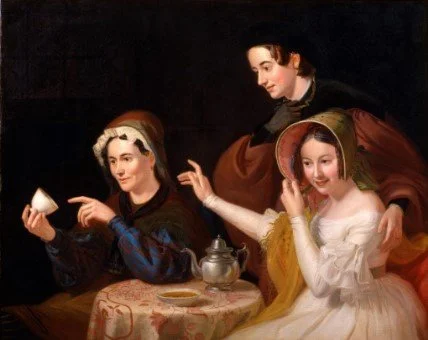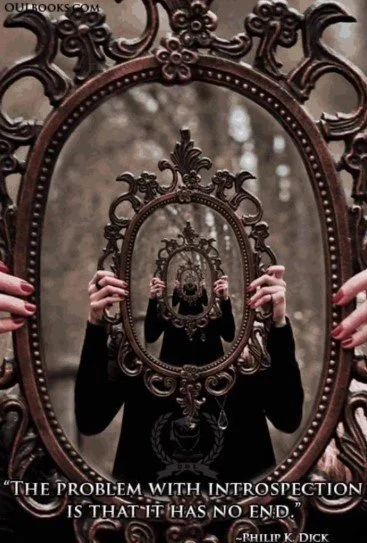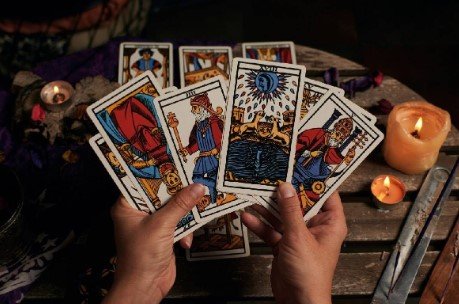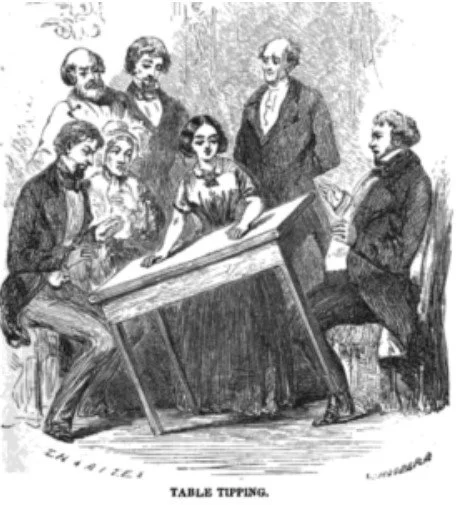Peering Beyond the Veil: A look into Ancient and Modern Divination Tools
Photo from: Medium.com
For many centuries, human kind has searched beyond the tangible world for guidance – seeking meaning in symbols, shadows and sensations. Divination, the art of gaining insight through supernatural means, lives in nearly every culture and continues to captivate people who are curious about the unknown. Methods can vary widely, but the intention is very much the same: to access deeper wisdom, to connect with the spiritual realm or greater understanding of the present and the future.
Let’s explore six mystical tools of divination – some ancient, some metaphysical, all deeply rooted in human intuition and curiosity.
Photo from: TheVintageTable.com
Tea Leaf Reading – Tasseography and the Art of the Brew
Tasseography, better known as tea leaf reading, is a charming and mystical method that origins lie in the Middle East and gained popularity during the Victorian era. After drinking a cup of loose-leaf tea (typically without a tea bag), the remaining leaves are examined for patterns that suggest symbols.
Birds may often represent news or messages
Hearts may signify love or harmony
Snakes may hint at betrayal or transformation
Circles can mean completion or unity
The beauty of tea leaf reading lies in its intuitive and organic approach – encouraging readers to trust their gut and the language of imagery.
Photo from: Gypsies: Journey Through Cultural Awareness
Palmistry – The Hands as a Map of Destiny
Palmistry or chiromancy, is the practice of reading the lines, shapes and mounts of the hands to gain greater insight into a person’s emotional tendencies, character and life path. With origins traced to China and India thousands of years ago, it spread through ancient Greece and Egypt, becoming a cornerstone of fortune-telling traditions.
Head line relates to intellect and decision-making
Heart line reflects emotions and romantic outlook
Fate line (if present) can indicate one’s relationship with destiny and outside influences
Life line is often misunderstood – it speaks more to vitality and life changes than longevity
Palmistry continues to gain resurgence, not only for prediction, but for personality and self-reflection.
Photo from: Medium.com
Mirror Scrying – Gazing into Shadows
Mirror Scrying, also known as catoptromancy, is the practice of gazing into a reflective surface – such as a darkened mirror – to enter a trance-like state and experience visions. This method’s origins date back to ancient Greece, but became especially popular among occultists in the Victorian era.
The black mirror acts as a portal to the subconscious or spirit realm. Practitioners often dim the lights, use candles and empty their minds to allow these visions or images to form. Visions can appear as faces, symbols, landscapes or even an entire scene.
This type of divination is deeply meditative and is often utilized for spiritual communication or shadow work.
Photo from: NextAvenue.org
Tarot Reading – The Cards of Fate
Tarot Cards are perhaps the most well-known divination tool, with origins in 15th-century Europe. Once used for games, tarot evolved into a spiritual practice in the 18th century when seers began using it to interpret messages from the divine.
A standard tarot deck is comprised of 78 cards:
Minor Arcana (56 cards): reflect daily situations and emotional nuances, divided into four suits (Swords, Cups, Pentacles & Wands)
Major Arcana (22 cards): represents life’s major lessons (e.g., The Lovers, Death, The Fool)
Every card carries rich symbolism, and readings are often shaped by the spread (or layout) and the reader’s intuitive impressions. Tarot is not only about fortune-telling – it’s a mirror of the psyche, a tool for self-awareness, and a way to dial into archetypal energies.
Photo from: ApolloTarot.com
Pendulum Reading – The Swing of Spirit
Pendulum divination is a type of dowsing that depends on subtle movements of a weighted object suspended from a chain or cord. It’s often used to answer yes/no questions, locate lost objects, or detect energetic imbalances.
To use a pendulum, the practitioner calibrates it by asking a simple yes/no question they already know the answer to, watching how it swings:
Back and forth or side to side = yes or no, depending on calibration
Circular motion may indicate uncertainty or spiritual presence
Some people believe the pendulum is moved by the unconscious mind, while others feel it’s a tool that responds to spiritual energy or higher guidance.
Photo from: TheOldOperatingTheatre.com
Table Tipping – Spirit-Driven Movement
Table tipping is a physical mediumship technique that originates during the Spiritualist movement of the 19th century. Participants sit around a small, lightweight table and place their hands gently on its surface. After a period of concentration or invocation, the table may begin to rotate, tip or maybe even rise – seemingly under spiritual influence.
It is said that spirits are believed to manipulate the table to communicate, often using some type of code (e.g., one tap for yes, two for no). While skeptics argue it’s subconscious muscular movement (ideomotor effect), many Spiritualists see table tipping as a deeply validating form of spirit communication and contact.
Photo from: LearnReligions.com
Final Thoughts
Whether you wholeheartedly believe these tools connect to the spirit realm, access the subconscious mind or offer a creative pathway to understanding life’s many mysteries, divination invites us to pause and connect with the unseen world. These rituals carry the weight of years of tradition and the intimacy of personal reflection and revelation. In a crazy, hectic world full of noise, they offer quiet moments of self-reflection, insight and sometimes, a little enchantment.
So next time you are curious about what lies ahead, or within, perhaps your answer is already waiting in the palm of your hand, in the flicker of a candlelit mirror or at the bottom of a tea cup.
Which of these divination tools are you most drawn to? Have you tried one before, or are you feeling a call to explore? Let us know your journey into the unknown, it might just inspire someone else to start theirs.
Written by: Rachel DeMicco
—————
Sources & Further Reading
Palmistry (Chiromancy):
Gettings, Fred. The Book of the Hand: An Illustrated History of Palmistry
Tea Leaf Reading (Tasseography):
Romani, Dennis Fairchild. Tea Leaf Reading
Mirror Scrying (Catoptromancy):
Tyson, Donald. Scrying for Beginners: Tapping into Supersensory Powers of Your Subconscious
Pendulum Divination (Dowsing):
Vogt. Evon Z., and Ray Hyman. Water Witching USA.
Tarot Reading:
Place, Robert M. The Tarot: History, Symbolism and Divination
Table Tipping (Physical Mediumship):
Doyle, Arthur Conan. The History of Spiritualism








